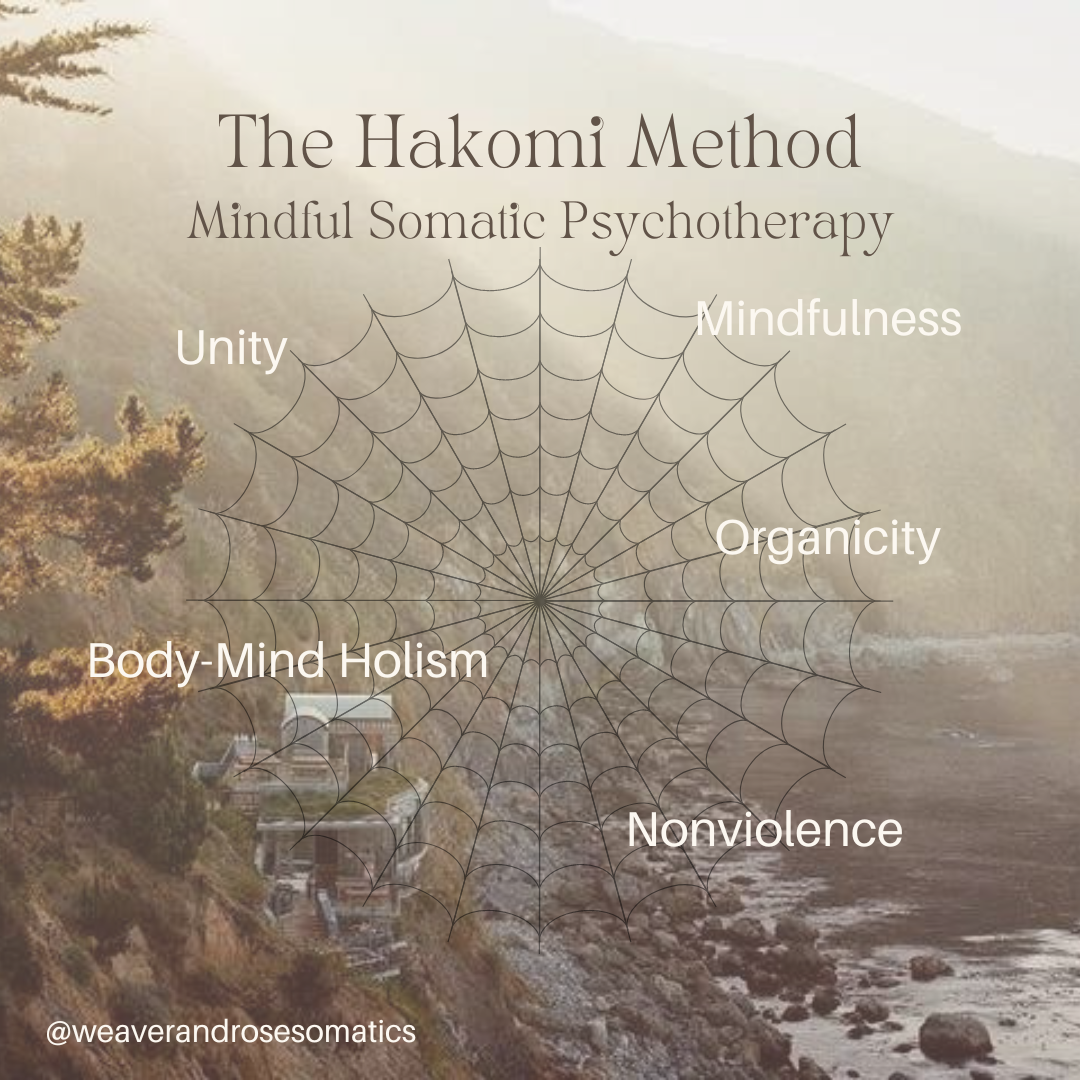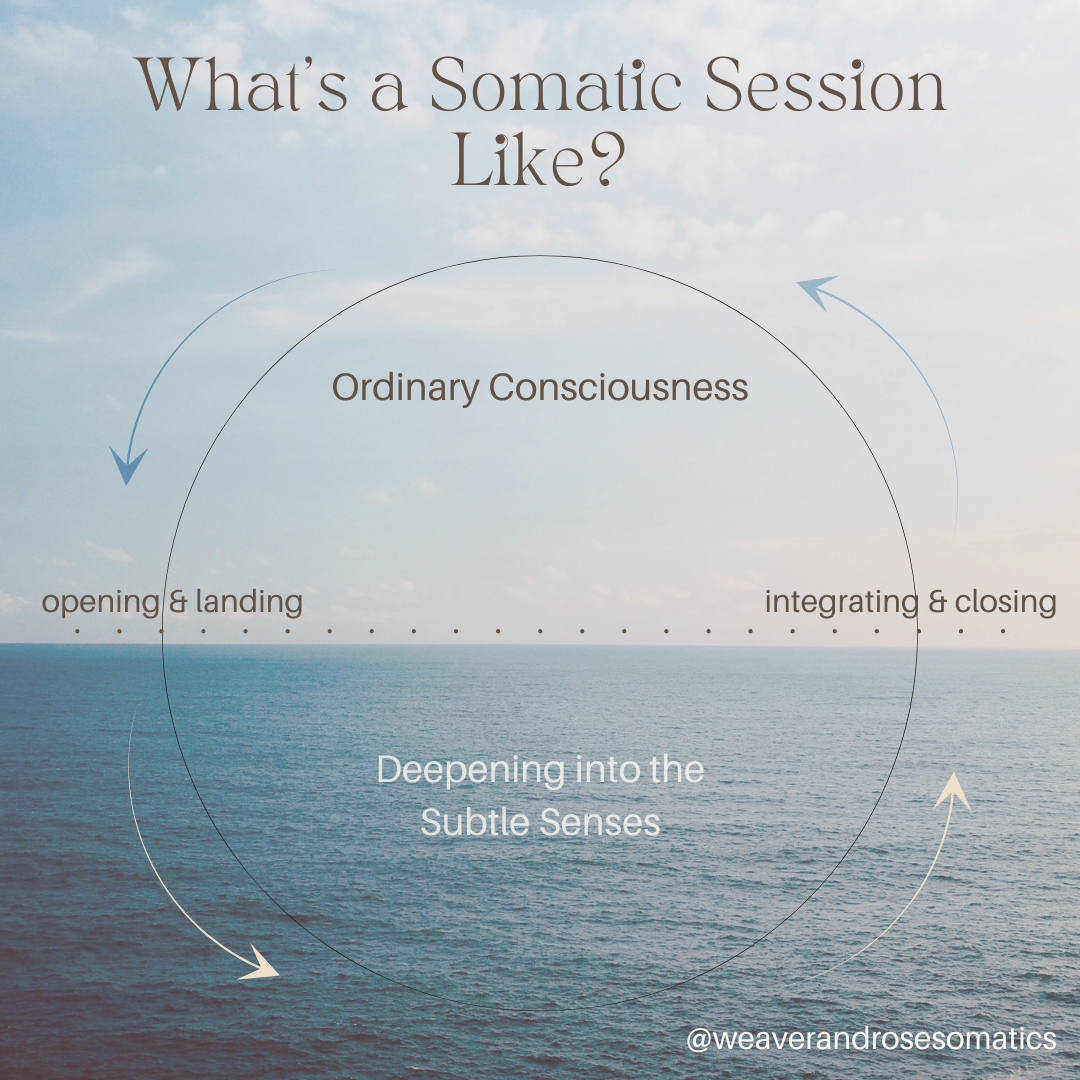What is the Hakomi Method?
A big part of my somatic lineage and what I draw from a lot in client sessions is the Hakomi Method. Haven’t heard of it? A lot of people haven’t! Let me break it down for you:
A Short History
Back in the 70s and 80s California was a hub for experiential, experimental, body based therapies (mainly coming from Eastern philosophies and traditions like Buddhism, Taoism, Aikido and movement and dance coming out of Afro-Caribbean lineages). It was a melting pot of thinkers and movers who were interested in a different way of living, being, and healing and was the birthplace of a lot somatic modalities we practice today. (I cannot state enough that these modalities, though new to the West, were and are rooted in in-tact Indigenous cultures and philosophies and those of us practicing owe a debt of gratitude to those communities.)
One of those thinkers and movers was Ron Kurtz, who founded the Hakomi Institute in the early 80s. He wasn’t a psychologist (I believe he later became one as the Board of Behavioral Sciences began to rigidly define what psychotherapy was and penalize those thought to be practicing without proper licensure- this is something many of us in this community grapple with currently but that’s a tale for another day). He believed that this Method of relating to the body and to each other in service to a deeper relationship with ourselves and others should be for the people and you didn’t need a degree to practice. This is part of the reason Hakomi isn’t more well known- it was meant to be orally passed along amongst communities. It was always meant to be for the people.
In Practice
The Hakomi Method is a Mindful Somatic Psychotherapeutic practice and draws from Buddhist contemplative practices (like mindfulness), Gestalt therapy, Reichian character theory, Aikido, Parts Work, Focusing, and more recently has folded in elements of Continuum, Somatic Experiencing, and attachment theory. It’s dynamic and creative and encourages practitioners to cultivate a loving presence, one of nonjudgement and curiosity. It’s a therapeutic methodology that aims to allow the client to work with their core material (aka the stuff that’s been following you around all your life that affects your relationships and quality of life) and provide missing experiences within the therapeutic relational container.
The Method is artfully draped around five guiding pillars or principles: mindfulness, nonviolence, organicity, unity, and body-mind holism. The idea is that the client is the authority of their experience and what wants to arise and be worked with is the thing to be with (rather than the top down “here’s your dysfunction and here’s how we fix it” model we see in other Western psychotherapeutic approaches).
The word “Hakomi” is a Hopi word meaning “how are you in relation to these many realms”. This phrase is a spectacular encapsulation of the work in that Hakomi teaches both practitioner and client to notice how they are oriented around a particular subject or theme and asks them to get curious about it. It’s about relationship, something you’ll hear me say time and time again.
I came to Hakomi as a client during some of my darkest days and coming to it as a practitioner was a natural fit- I knew it in my bones. It blends seamlessly with my previous work and my spiritual/ancestral practices. And it’s a joy to share it with you.
(It needs to be noted that the story behind the name is that someone working closely with Ron Kurtz heard the word in a dream and researched it, finding it to be a Hopi word. It’s said that he asked permission from Hopi tribal leaders to use the name and they granted allowance. I don’t know how true this is and the organization is currently figuring out ways to be in relationship with this history in a good way since there hasn’t been a relationship with the Hopi people after having taken the name. I share this for the sake of integrity and transparency.)
What Does a Hakomi Session Look Like?
The first thing I’ll name is that it looks different for everyone (I know I know eye roll- but it’s true and that’s important, I’ll tell you why in a minute). Some people have a strong relationship with movement, others have a strong relationship with symbols and imagery, others a strong sense of interoception (the ability to feel the sensations on the inside of the body). We go where the energy flows! This is important because if a practitioner pushes, let’s say movement, and that’s not something the client has much of a relationship with the client is left trying to “get it right” and ignoring what’s organically emerging. This is the difference between top down/hierarchical methods of healing and client-led healing. And if the client is like “oh wow I’m noticing I have a weird relationship with movement” then woo hoo that’s where we go- the energy is there, see?
Okay now that that’s been said: often times sessions can be structured into three distinct parts. Much like a story, much like a sequence or a song. There’s a beginning, a middle, and an end. The beginning looks like checking in and landing and noticing what’s coming up before deciding what wants to be worked with. From there, clients are guided into mindfulness (using whatever tools are available to them, and we learn new tools along the way!) and that brings us to the middle.
Here, we’re dipping into the subconscious, into the body, into the subtle realms. It’s here where we keenly observe (without judgement or meaning making) what arises. It might be a symbol, a gesture, an emotion, a bodily sensation, an impulse, a memory, an ancestor, a plant friend, a sense of movement, or a numbness/nothingness. There’s literally no wrong way- we’re practicing the art of noticing and unfolding. This is the juicy part! We follow what arises until we reach a point where we want to deepen- spiraling down and deepening into what’s being shown to us/felt/expressed and we notice your relationship to it. So much of this work is about noticing how we’re oriented to a subject, a person, or a theme. Not judging if it’s Right or Wrong, but noticing our relationship to it and, later, noticing how that’s serving us in life. This following, this deepening, can be: locating an emotion and letting it be there- it could be slowing down a gesture and noticing what comes with it- it could be following a vision of a deer in the forest- it takes so many forms depending on the client and what’s happening for them (more of the client led part). As we’re doing this, I as a practitioner, suggest simple explorations. “What happens if…?” What happens if we slow it down? What happens if we put it together? What happens if we put a movement to this feeling? And we see what that ellicits. It’s dynamic and creative (and often quite playful even when we’re in the deep with heavy stuff!). From this mindful exploration, following, and deepening- there’s usually a moment of insight, understanding, release, or clarity. (And sometimes that doesn’t happen and we pick up where we left off next time we meet.)
This moves us into the last part- the closing, the coming back up to ordinary consciousness, the integration of what just happened. This is where we begin to make meaning about the experience we just had and decide how to use this insight. Maybe it gets applied directly to life. Maybe it unfolds in the ether and what got tapped into makes itself known in six months. Maybe it’s something we keep coming back to for a while (our bodies/somas/systems like repetition- this is why we call it a practice!) There’s a dynamic sense of mystery that comes along with this work that we get more and more comfortable in as time passes.
What I love about conceptualizing sessions in this way is that it follows the model of the ritual arc. We prepare and open ritual space, we deepen and experience the ritual, and we come back up to get clear on what happened before we close the ritual. It’s also what we see when we look at models of Rites of Passage. A departure from the known, the underworld journey, and the return to the known. These are universal, cross-cultural, natural motifs and rhythms we get to experience while in session and out while we’re in a care container.
A note: this is typical of my sessions and comes from my somatic and spiritual lineages (which includes Hakomi and other modalities). This might not be the way someone else who uses the term “somatic practitioner” practices! Always ask your potential practitioner what a session looks like, I bet they’d love to tell you!
What do you notice coming up for you after having read this? An emotion? An image? A sensation?


